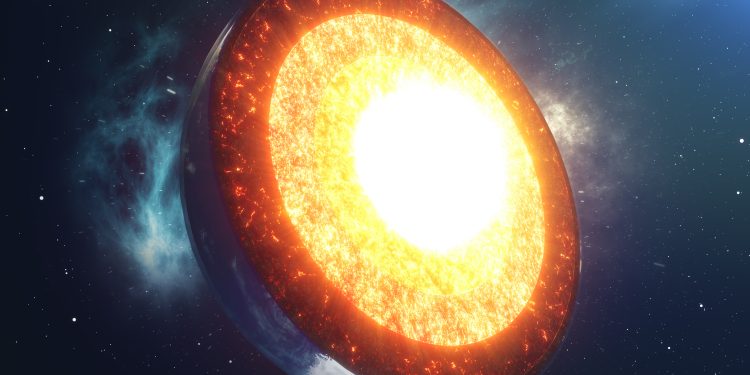For decades, scientists believed Earth’s inner core was a solid sphere spinning independently beneath the surface. Now, groundbreaking research reveals it isn’t just slowing down—it’s also subtly changing shape.
This discovery raises urgent questions: What’s causing these shifts? Could they affect Earth’s magnetic field? And how might they reshape our understanding of the planet’s deepest layers?
Buried 5,150 kilometers below the surface, the inner core—a scorching-hot, solid mass of iron and nickel—has long been thought to rotate at a steady rate. However, new seismic data suggests the outermost layer of the core is shifting, creating variations in its surface.
Researchers analyzed 168 earthquake pairs recorded decades apart, each originating from the same location in the South Sandwich Islands in the South Atlantic Ocean, Live Science reports. The seismic waves traveled through Earth’s interior before reaching sensors in North and South America.
While waves passing directly through the core remained unchanged, those skimming its outer surface showed subtle but undeniable differences—evidence that the core’s structure is evolving over time.
“The most likely thing is the flow in the outer core is stirring up the outermost inner core a little bit and changing the topography,” said in an interview with Live Science, John Vidale, a seismologist at the University of Southern California and lead author of the study.
A Slowing Rotation: Why the Inner Core’s Speed Is Changing
Previous research uncovered another unexpected shift—the inner core’s rotation is slowing down.
- Before 2010: The inner core was spinning slightly faster than the rest of the planet.
- After 2010: It began to slow down and is now lagging behind Earth’s surface rotation.
Scientists are still debating what this means, but some believe these changes could be linked to Earth’s magnetic field, shifts in the planet’s length of day, or even deep-seated geological processes.
What’s Causing the Inner Core to Shift?
The answer likely lies in Earth’s molten outer core, a vast ocean of liquid iron and nickel that surrounds the inner core and generates the planet’s magnetic field.
At the boundary between the solid inner core and the molten outer core, the inner core remains right at its melting point. This means that while it is technically solid, it may not be completely rigid. Scientists estimate these surface deformations could range from hundreds of meters to several kilometers wide.
The Magnetic Field and Future Implications
These findings are more than just an academic curiosity—they could have major consequences.
The inner core’s slow solidification is what drives heat movement in the outer core, which in turn powers Earth’s magnetic field. If the inner core is undergoing subtle but persistent changes, it could influence how the planet’s protective magnetic shield behaves over time.
In extreme cases, major disruptions to the core’s behavior could weaken the magnetic field, making Earth more vulnerable to solar radiation and affecting everything from satellite communications to animal migration patterns.
Despite these new findings, much remains unknown.
The current seismic data covers only a fraction of the inner core’s outermost layer, meaning scientists still lack a complete picture of what’s happening beneath us.
As seismic imaging technology advances, researchers may soon unlock even more secrets about the inner core, shedding light on how Earth has evolved—and what the future may hold for the planet’s magnetic field.











